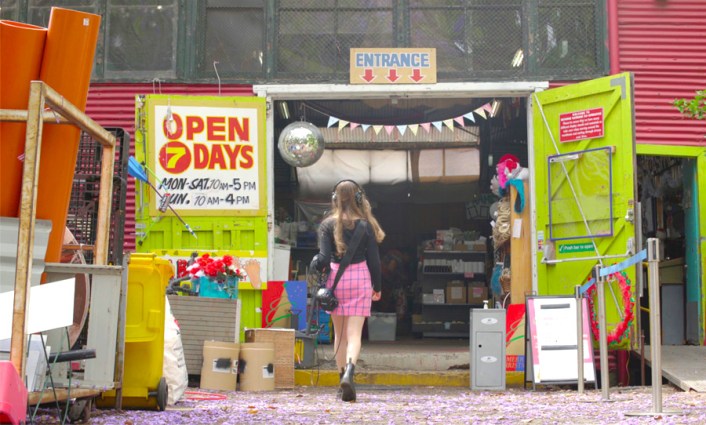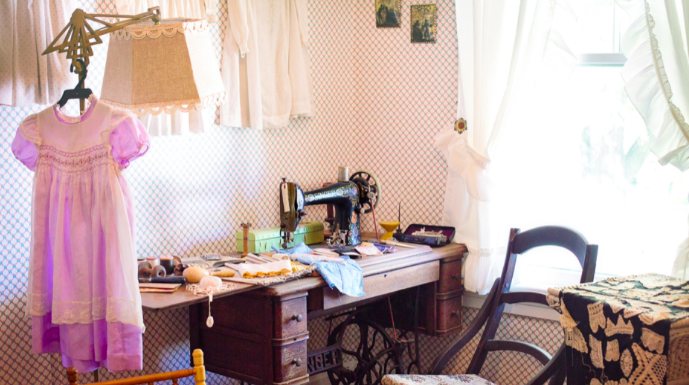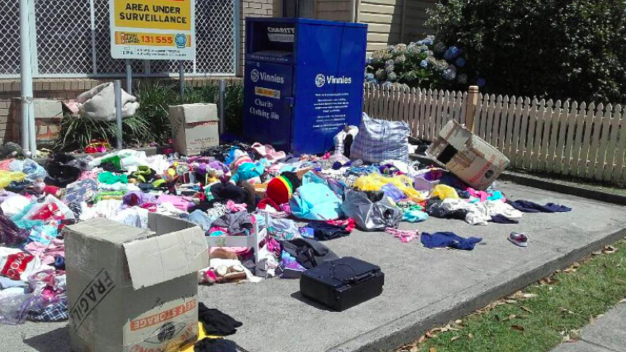Passionate long term fans of Reverse Garbage – the inner west Sydney mecca for people who love to reuse discarded materials – will love its new home nearby at 30 Carrington Road.
The new digs will offer a feast of creative opportunities. From classes to makers’ spaces and even corporate events.
Located amidst other artistic and creative points of interest it will be no surprise if the range of activities and opportunities keeps growing.
Incoming chief executive officer Kirsten Junor says education is the most important aspect of what they do at Reverse Garbage. The 3 R’s aren’t just about recycling. Empowering people to “think creatively and look at things [waste] in a different way” is super essential to fighting the waste epidemic.
So let’s get educational.
What if you want to bring your unused unloved things so others can turn them into treasures?
How do you know what’s good and what’s not?

Reverse Garbage has opened its door to a new Inner West warehouse in Carrington Road, Marrickville.
What goes where
So, if you have items like events props, industrial materials, and commercial waste, bring them to Reverse Garbage.
If you have good condition, clean household items (clothes, books, homewares and knick-knacks) that are not damaged and can be resold second-hand as-is, they should be donated to organisations like The Salvation Army, Saint Vincent de Paul Society, and the Australian Red Cross.
Items like furniture and building materials can be taken to landfill sites that have reuse shops attached to them to sell items that would otherwise be put into the landfill, like the Kimbriki Resource Recovery Centre or the South Hobart Tip Shop.
What to donate
A good rule of thumb is to consider whether the materials you want to donate are clean, safe and suitable for reuse.
It’s important to check each organisation’s websites before going to donate items. Some places require you to book in ahead of time to donate your items.
Reverse Garbage, like many other reuse organisations, accepts items on a case-by-case basis.
Unlike secondhand shops like Vinnies, Red Cross and Salvos, Reverse Garbage does not accept most books, CDs, DVDs, clothing, and homewares.
Here is a list of accepted items for Reverse Garbage:
- Acrylic commercial offcuts
- Artists paints – watercolours, acrylic, oils etc
- Books relating to craft, art, building, gardening, or special interest. Encyclopedias on approval
- Bottle tops (only CLEAN plastic milk/juice bottle tops)
- Containers (plastic, glass, cardboard and metal containers and drums, boxes, bottles, pots)
- Coreflute – commercial off-cuts
- Corks
- Doors and windows
- Fabric and textiles (rolls, swatches and samples) min 1m pieces
- Film and theatre props and costumes (theatre props, costumes, set pieces, wigs, costume jewellery)
- Film and theatre set materials (flats, columns, treads, staging pieces, plinths, lighting gels, cradles)
- Film reels
- Foam core commercial off-cuts
- Lighting foils and films
- Harberdashery (zippers, buttons, thread, belts, clips, braid, ribbon, padding)
- Leather (belts, rolls, skins, off-cuts)
- Merchandising (mannequins, body shells, coreflute, props, display items, signage)
- Metal (punch-outs, brackets, wire, sheets)
- Moving boxes (delivered to us, in good reusable order)
- Netting and shade materials
- Novelty and promotional items
- Paper and cardboard (leftovers and offcuts)
- Pavers (approval required depending on capacity – delivered to us, no pickups)
- Plastics and foam (perspex, acetate, polypropylene, vinyl, medium to high density polystyrene (not domestic packaging), polyethylene foam, latex foam, foam rubber, neoprene, EVA skins, closed cell foam as sheets, blocks, cut-outs, stencils, O-rings)
- Rope, cord and twine
- Stationery (notepads, pens, pencils, envelopes.) No lever arch files or binders
- Timber and plywood (de-nailed, including structural timber, flooring, spools and frames)
- Tools
- Tubing (plastic, cardboard, rubber)
- Vinyl records
- …and anything that is suitable for crafting and making, including commercial over-runs and industrial off-cuts
Australians are no stranger to reuse and upcycling
According to a 2021 Gumtree report, 62 per cent of Aussies have bought at least one pre-loved item in the past year. And a new consumer trends report has revealed that seven in 10 Australian consumers are shirking the “new is always better” proverb in favour of the more sustainable option of repairing and reusing the old.

People are getting more creative with upcycled material and preloved items.
The problem is that many people do not know exactly where to source specific items, and they don’t know which types of items to donate where.
Waste is a massive problem in a sector that is trying to see waste as something that can be reused. Bringing items to the wrong stores, trying to donate soiled items, or illegally dumping items outside of business hours, means that a lot of our old stuff that we tried to donate unfortunately ends up in landfill.
Steve Gillespie metro Sydney area manager at The Salvation Army estimates that one Salvos store might receive roughly 5000 kilograms of clothing donations per week, which can create problems if the donations are bad quality, soiled or broken.
“Out of every kilogram of donations, 60 per cent is good, and around 40 per cent is poor quality that unfortunately we have to reject… and that [taking it to landfill] is eating into the funds,” he said, “It’s a waste of 6 or 7 million dollars per year… that could easily go to drug and alcohol programs and kids programs.”

Illegal dumping at a Vinnies charity bin
You can read more about Reverse Garbage and the reuse revolution here.








